
The HOA Dominates
Angela Medley June 20, 2023

Angela Medley June 20, 2023

A homeowner’s association (HOA) is an organization that makes and enforces rules for a group of residents in a subdivision, community, or residential building. HOAs collect fees (or dues) from their members to pay for the maintenance of common areas and the upkeep of facilities.
In this article, we’ll look at how popular HOAs are, the average cost of living in an HOA, and more:
In real estate, the term homeowner's association is used regardless of whether the membership comprises residents who own single-family homes or condominiums.
HOAs consisting of single-family homes account for 60% and condominium communities account for 38% of community associations in the United States. Cooperatives (co-ops) account for 2%.
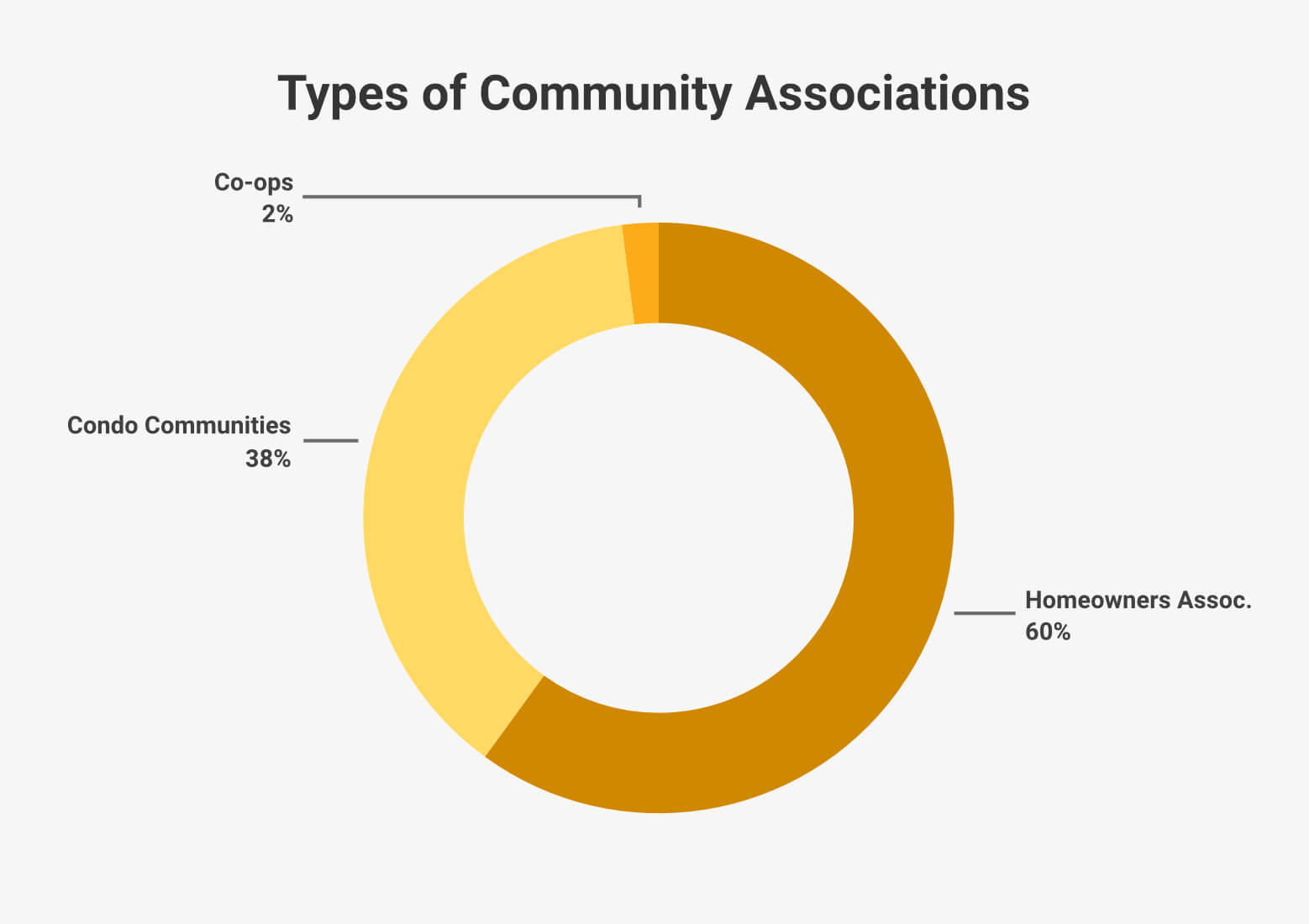
Here is a breakout of the percentage of residential property types by association types:
| Type | Percentage |
|---|---|
| Homeowners Associations | 60% |
| Condominium Communities | 38% |
| Cooperatives | 2% |
Source: Foundation for Community Association Research
Co-ops operate differently than standard condo HOAs. In a co-op, the building is owned by a corporation. Rather than traditional ownership, residents own shares in the corporation and have the right to occupy their units.
Legal structure aside, co-op owners pay a maintenance fee for the upkeep of the building and shared spaces, just like homeowners in other types of community associations.
The total number of associations has also increased. In 1970, there were around 10,000 community associations in the US. In 2020 that number increased to over 355,000, over a 35x increase.
Below you can see the total number of associations in the US over time which includes standard HOAs, condominium communities, and co-ops:
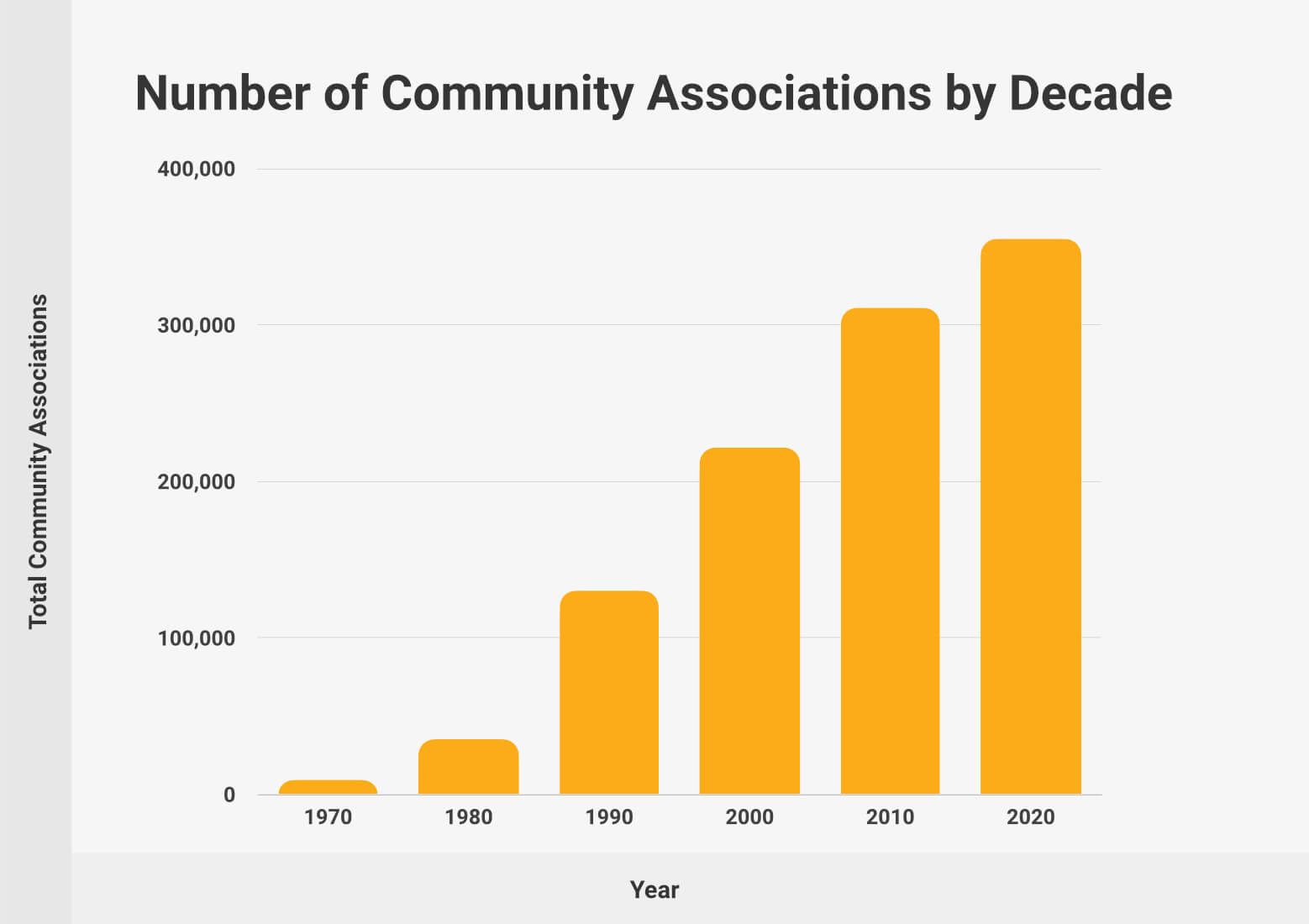
Here is a table showing the total number of HOAs:
| Year | Community Associations |
|---|---|
| 1970 | 10,000 |
| 1980 | 36,000 |
| 1990 | 130,000 |
| 2000 | 222,500 |
| 2010 | 311,600 |
| 2020 | 355,000 |
Source: Foundation for Community Association Research
About 26% of the US population lives in HOA communities. Community associations have grown in popularity. The number of residents living in them increased from 2.1 million in 1970 to 74.1 million in 2020, a 35x increase. In every 10-year period since 1970, we can see ample growth, and most recently, from 2010 to 2020, the number of HOA residents grew by 20%.
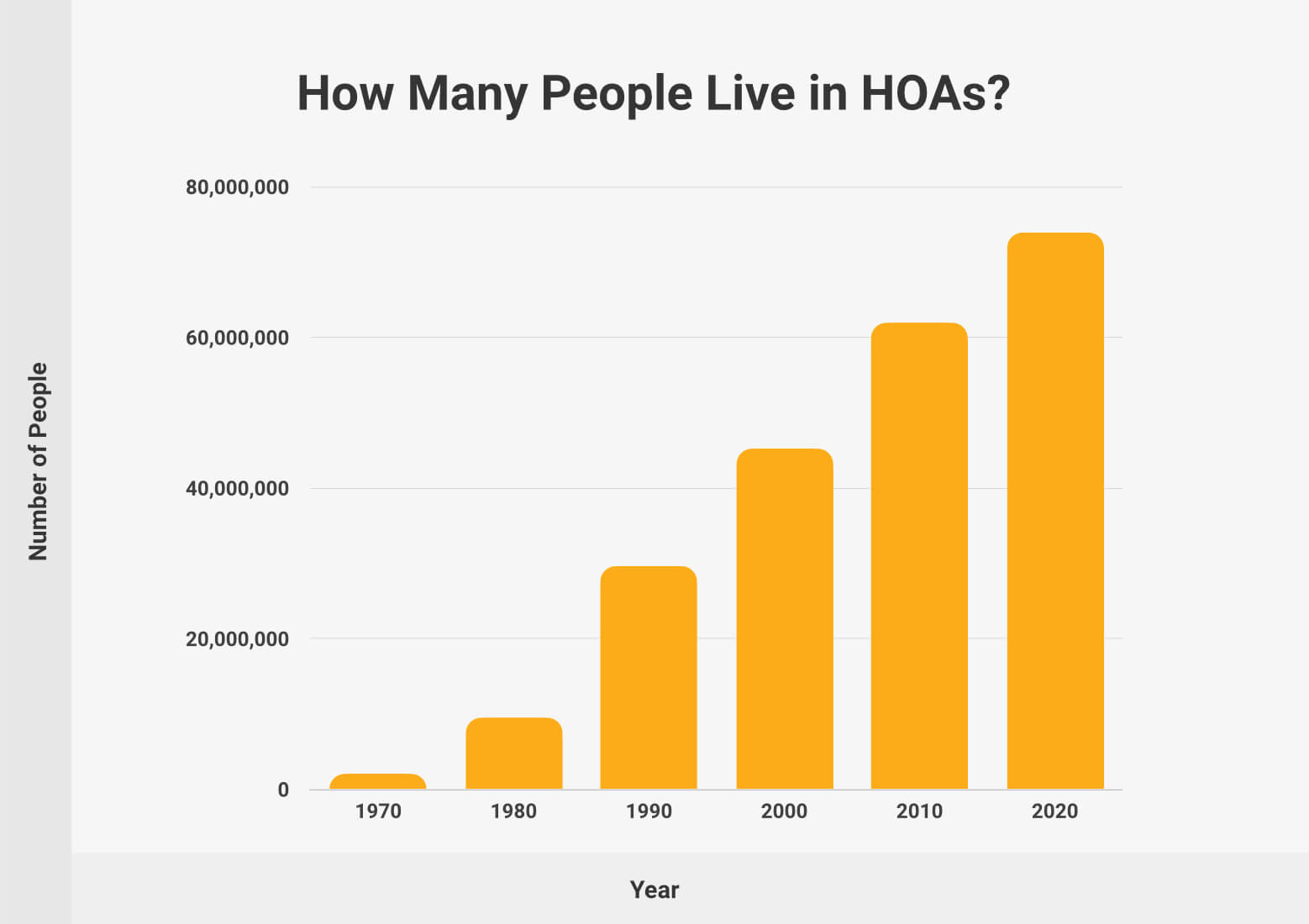
Here is a table showing the number of people living in HOAs since 1970:
| Year | Residents |
|---|---|
| 1970 | 2,100,000 |
| 1980 | 9,600,000 |
| 1990 | 29,600,000 |
| 2000 | 45,200,000 |
| 2010 | 62,000,000 |
| 2020 | 74,100,000 |
Source: Foundation for Community Association Research
As the number of residents and communities grew over time, so did the number of housing units that are part of HOA communities. In 1970 there were around 700,000 housing units in HOAs in the US. This number grew to over 27 million housing units in 2020, a 39x increase.
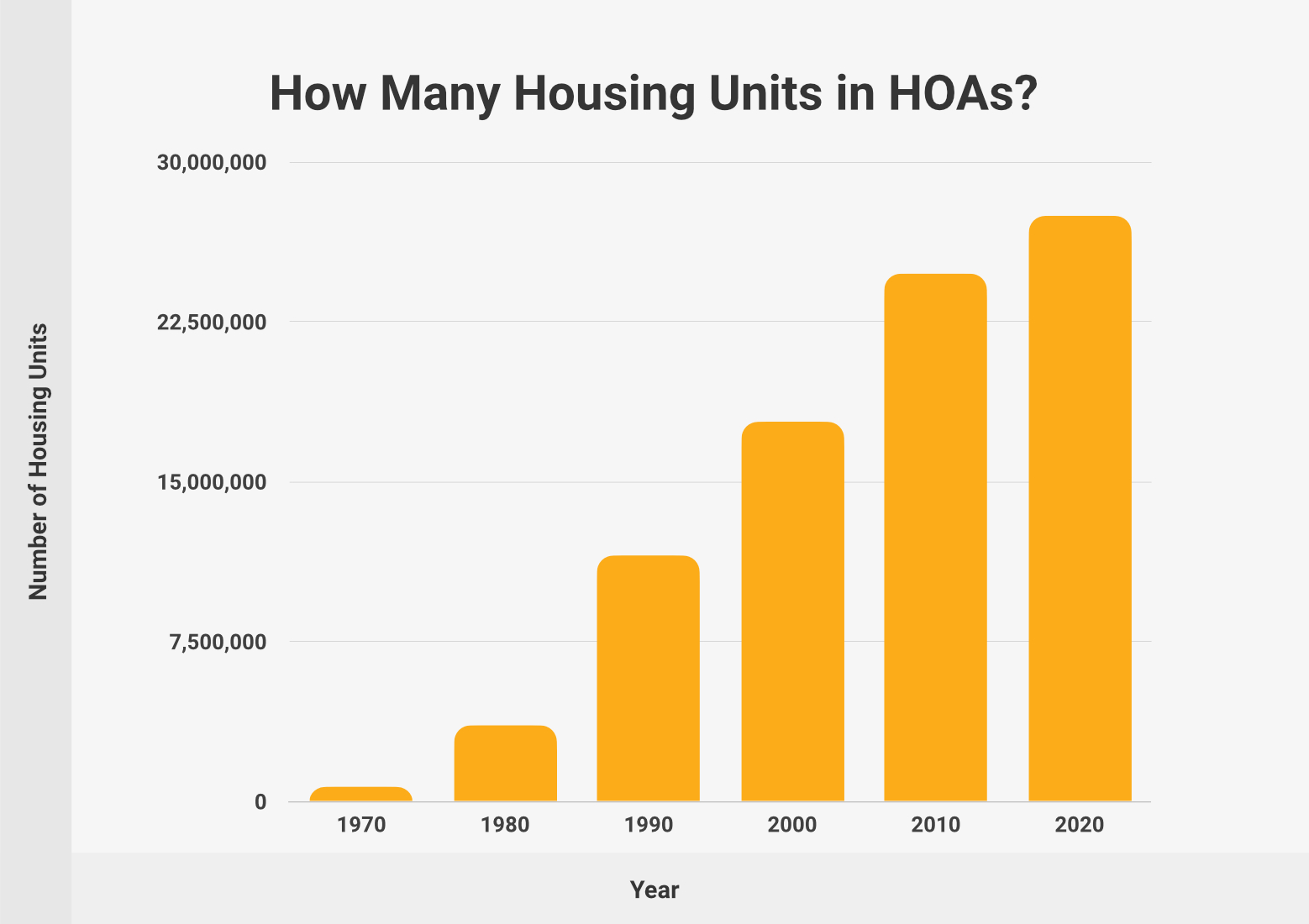
Here is a table showing the total number of housing units in HOAs:
| Year | Housing Units |
|---|---|
| 1970 | 700,000 |
| 1980 | 3,600,000 |
| 1990 | 11,600,000 |
| 2000 | 17,800,000 |
| 2010 | 24,800,000 |
| 2020 | 27,500,000 |
Source: Foundation for Community Association Research
Today HOAs in the US are more popular than ever. As the number of newly built homes that are part of HOAs increases, we can expect the number of residents living in HOA communities across the US to grow, too.Over the past 10 years, the percentage of newly built homes that are part of a homeowner’s association has increased from 49% in 2011 to 67% in 2021.
Here is a breakdown of total number of new construction housing units with HOAs:
| Year | % of New Construction |
|---|---|
| 2011 | 49% |
| 2012 | 54% |
| 2013 | 58% |
| 2014 | 59% |
| 2015 | 60% |
| 2016 | 59% |
| 2017 | 61% |
| 2018 | 64% |
| 2019 | 62% |
| 2020 | 65% |
| 2021 | 67% |
Source: US Census
New homes that are a part of a homeowner association are growing fastest in the southern and western United States.
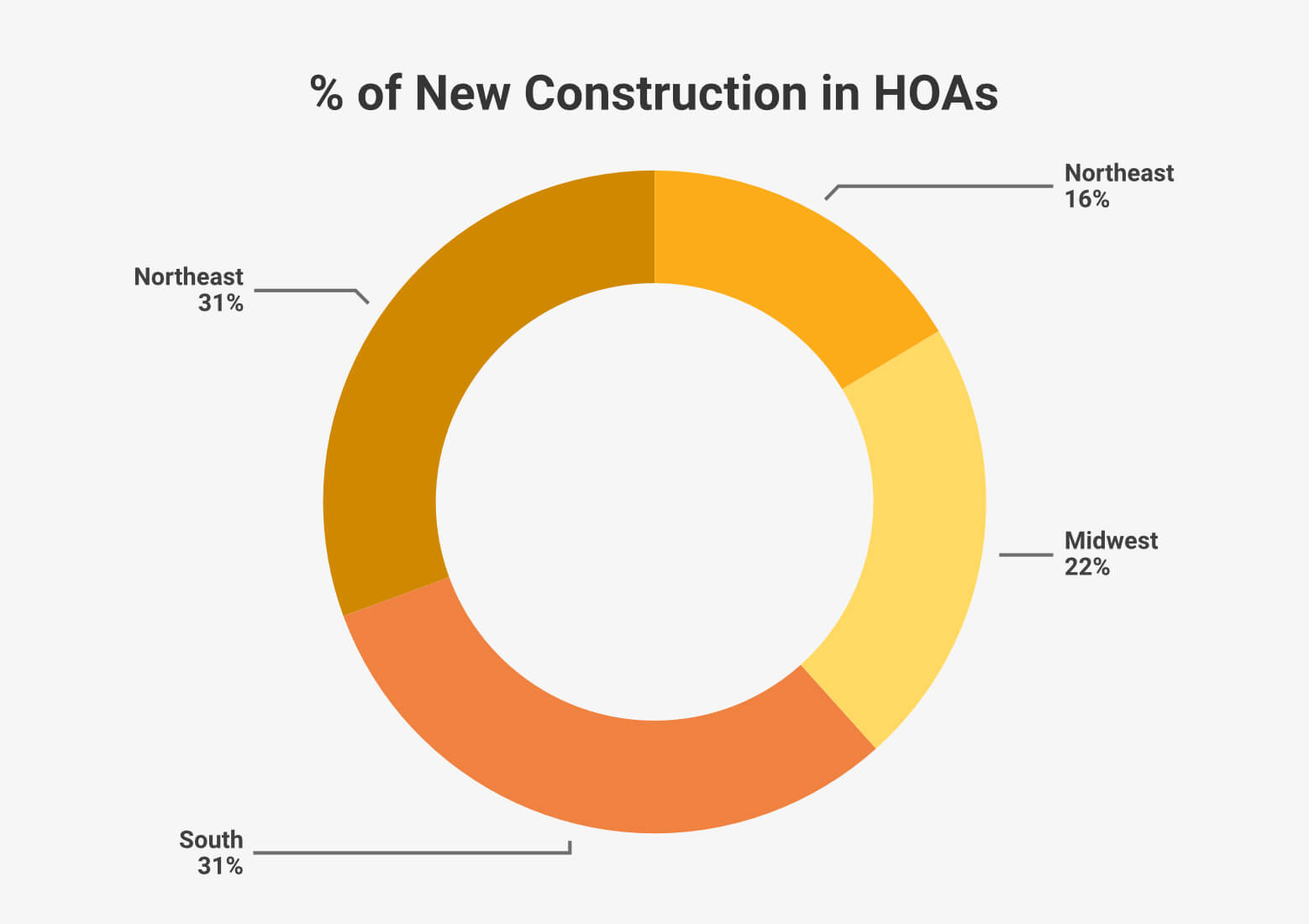
Here is a table showing the homeowners associations, by region, for new construction homes:
| Region | % of New Construction 2021 |
|---|---|
| Northeast | 38% |
| Midwest | 51% |
| South | 72% |
| West | 71% |
Source: US Census
In Florida, Colorado, and Vermont, over 40% of the population lives in an HOA. These three states are where HOAs are the most common. HOAs are also common in California, New Hampshire, Washington, Arizona, and Illinois, with each of these states having over 30% of its population living in a community association. The state where HOAs are the least common is Mississippi, where only 3% of the population resides within an HOA.
The following list shows the percentage of each state's total population that lives in an HOA:
| State | % Population Living in HOA |
|---|---|
| Alabama | 10.0% |
| Alaska | 13.0% |
| Arizona | 30.5% |
| Arkansas | 31.0% |
| California | 35.6% |
| Colorado | 40.1% |
| Connecticut | 12.9% |
| District of Columbia | 20.0% |
| Delaware | 41.0% |
| Florida | 44.5% |
| Georgia | 21.8% |
| Hawaii | 20.0% |
| Idaho | 27.0% |
| Illinois | 30.0% |
| Indiana | 12.5% |
| Iowa | 15.0% |
| Kansas | 10.0% |
| Kentucky | 11.0% |
| Louisiana | 6.0% |
| Maine | 21.0% |
| Maryland | 17.0% |
| Massachusetts | 23.8% |
| Michigan | 14.1% |
| Minnesota | 26.7% |
| Mississippi | 3.0% |
| Missouri | 14.9% |
| Montana | 27.0% |
| Nebraska | 15.0% |
| Nevada | 16.5% |
| New Hampshire | 35.0% |
| New Jersey | 16.4% |
| New Mexico | 14.0% |
| New York | 18.8% |
| North Carolina | 25.9% |
| North Dakota | 13.0% |
| Ohio | 13.8% |
| Oklahoma | 7.0% |
| Oregon | 13.1% |
| Pennsylvania | 10.3% |
| Puerto Rico | 3.0% |
| Rhode Island | 27.0% |
| South Carolina | 25.9% |
| South Dakota | 11.0% |
| Tennessee | 10.1% |
| Texas | 20.6% |
| Utah | 19.1% |
| Vermont | 46.0% |
| Virginia | 23.2% |
| Washington | 31.0% |
| West Virginia | 5.0% |
| Wisconsin | 12.7% |
| Wyoming | 17.0% |
Source: Foundation for Community Association Research
While most residents enjoy the amenities and being part of an association, one potential downside is the cost. Monthly fees depend on the neighborhood or building’s location and the extent and nature of the amenities offered.
Let's look at regional differences among some of the top cities in the United States.
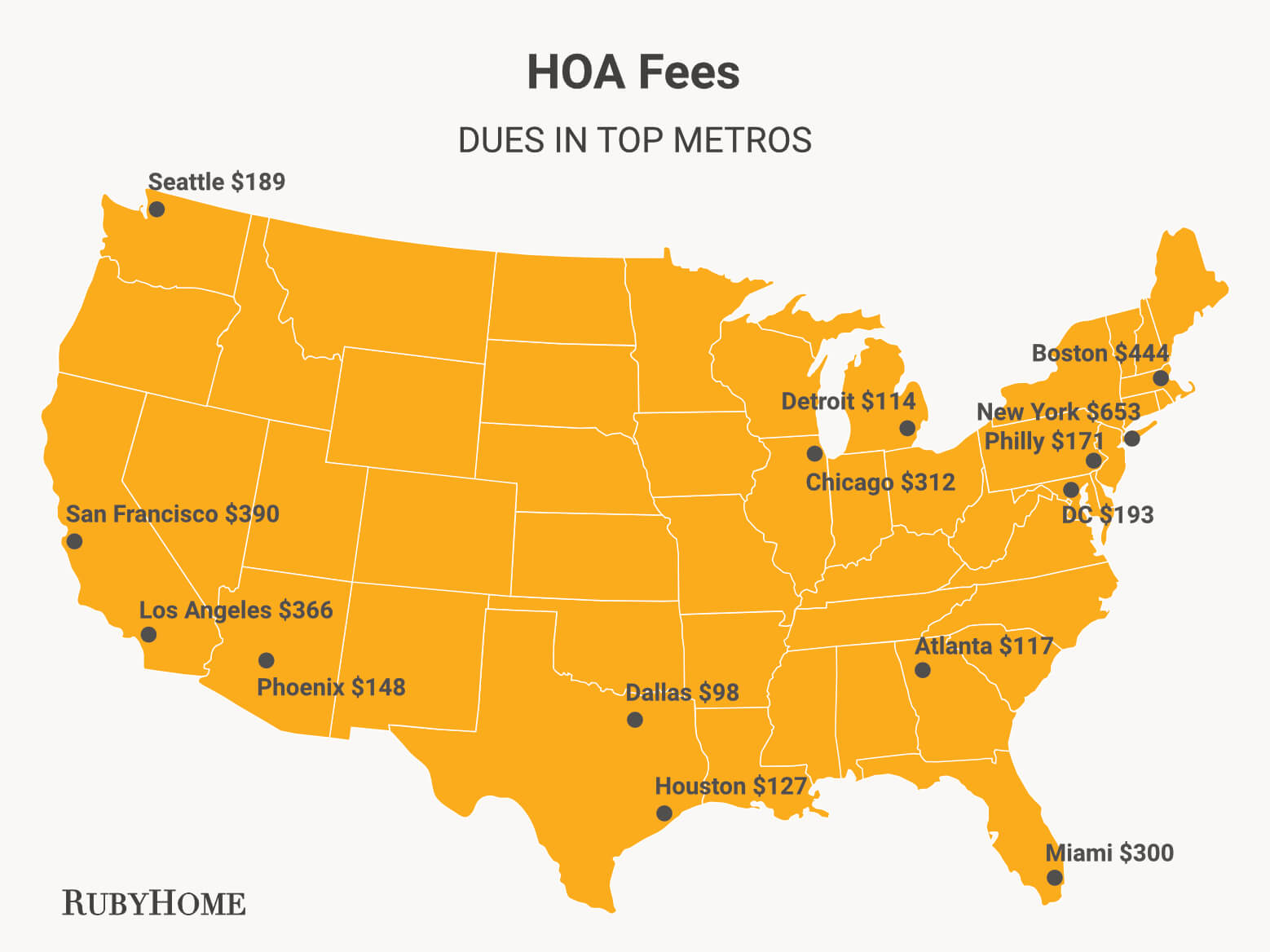
Here are the mean monthly HOA fees for the metro areas:
Source: American Housing Survey
Unsurprisingly, the New York and San Francisco metro areas had the highest monthly association fees. The two markets consistently rank as some of the most expensive to purchase real estate in the United States. In expensive cities, it's common to pay over $400/month.
In addition to location, the type of community association can impact the fees. For example, condo associations often have higher dues because they typically offer more amenities like fitness centers, concierges, valets, etc. Here's how average single-family home and condo association fees stack up across the US:
Keep in mind these are general estimates from a small sample size of communities across the country. Fees can range from as little as $50/month to over $1000/month.
As HOAs have risen in popularity over the years, it begs the question, what advantages are there for homeowners who choose to live in an HOA community? Here are five of the most common benefits:
Having a well-maintained home in a well-kept neighborhood is attractive to buyers. With HOA residents held accountable for maintaining their properties and common areas, property values stay more consistent. According to a study at George Mason University:
Source: Cato Institute
Having a community that takes care of landscaping, garbage collection, and more can ease the challenges associated with home ownership. Living in a well-maintained neighborhood is aesthetically better and more effortless in which to live.
Amenities vary from association to association. Standard features include swimming pools, barbecue pits, neighborhood parks, walking trails, and sports courts.
Homeowners must comply with guidelines called Covenants, Conditions, and Restrictions (CC&Rs), which leads to fewer problems between neighbors. For example, most associations forbid loud, late-night parties or brown lawns. Association boards mediate disputes between neighbors and enforce consequences when things go wrong.
HOAs can offer a real sense of togetherness, and some organize community gatherings and activities. Many members enjoy the increased opportunities to socialize or be a part of something bigger.
Source: Foundation for Community Association Research
While HOAs offer many benefits, they may not be perfect for everyone. Here are some of the most common drawbacks of living in an HOA:
Some homeowners may not like restrictions on the types of vehicles they can park in their driveway, what colors they can paint their home, or the types of trees or bushes they can have in their front yard. For those who don't like being told what to do, HOAs may feel restrictive. Remember that guidelines vary depending on the community; some are stricter than others.
One should consider the extra cost of HOA fees and determine if the services provided are worth it. When residents were asked how the felt about the value they received versus the cost:
Of course, some may feel they are paying too much.
Source: Foundation for Community Association Research
Not all HOAs are adequately managed. One potential downside is being part of a homeowners association where a few members refuse to pay fees, or the HOA has problems enforcing the rules.
That's our summary and key statistics for HOAs in 2022. With now more than 1 in 4 Americans living in an HOA, it’s clear that they have grown massively over the past 50 years. In addition, based on construction trends, the popularity of HOAs is set to continue to expand into the future.
Stay up to date on the latest real estate trends.
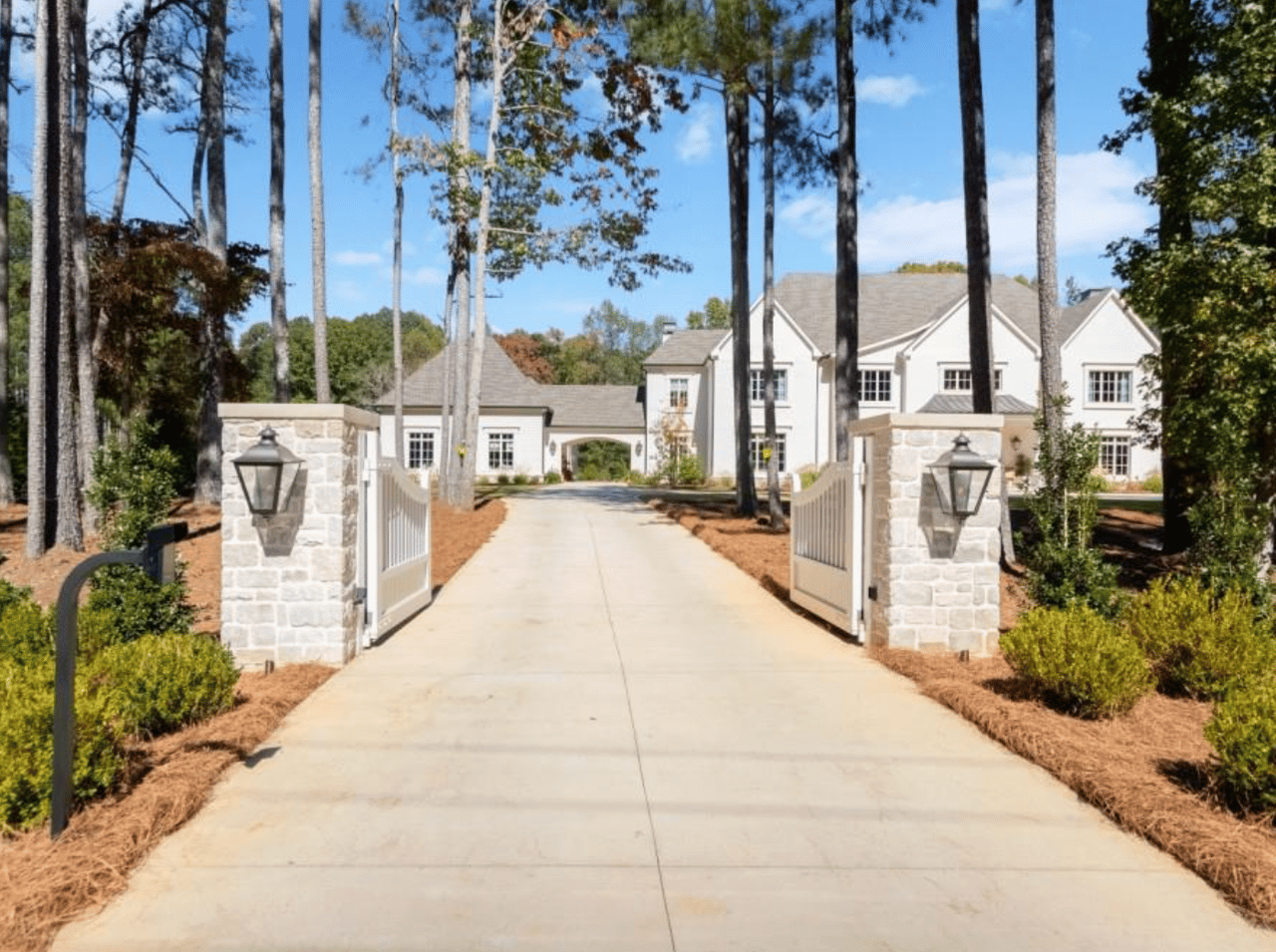


What You Should Be Doing Now

Let's do some good in our community together!


Here's what I'd do now if I wanted to sell my home in 2026

Here’s a simple, homeowner-friendly checklist to help you move through the month with ease.

Here’s Why It Might Be the Smartest Move of the Year
